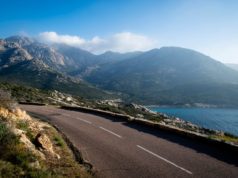What have the Singapore and Canadian Grands Prix got in common? Not much, you’d think, having in mind that one is a street circuit and the other a super-quick track and one takes place at night, the other in daylight. And yet the race that precedes the bulk of the European part of the season and the one that follows its conclusion have one common element: the chairs. Yes, in amongst the complexities of Scuderia Ferrari’s logistics programme, for example, one element of the kit used in the team’s hospitality area in Montreal is making a “return” for this race in the tiny Asian republic. It’s just one example of just how tricky is the job of working out what goes where in terms of equipment over the course of the year.
Fingers were pointed, drivers were blamed, but at the end of the day…
Three doesn’t go into one! ?
Taking a look at last year’s huge #SingaporeGP start crash ? pic.twitter.com/xpJBBq2Bgu
— Formula 1 (@F1) September 12, 2018
Strange as it seems, another similarity concerns the brakes. Of course, at the Marina Bay circuit, the drivers don’t have to deal with the really heavy braking they encounter at the Ile Notre Dame. But the frequency of braking, fifteen times or so per lap, and the difficulty of cooling discs and pads in the equatorially humid conditions make Singapore one of the most demanding for the braking system, even though the average speed – Sebastian Vettel’s pole lap last year was set at 183.272 km/h – is one of the lowest of the season.
The Grand prix at Marina Bay has been on the calendar since 2008, making its name as the first ever Formula 1 night race
The job of turning normal streets into a track, designing and constructing the lighting rigs, ensuring safety and planning the logistics was a massive task. Ten years on, one can say that this race “won” the inevitable competition with the event in neighbouring Malaysia. Sepang is no longer on the calendar. Braking and fuel consumption (high because of the endless accelerations and braking) are important. The same goes for traction out of the corners as well as for the concentration behind the wheel. As for the tyres, they skip a compound, with the Soft, Ultrasoft and Hypersoft being the chosen trio.
“Woah… there’s a giant lizard on track!” ?
Definitely not your average team radio moment!#SingaporeGP ?? #F1 pic.twitter.com/cZs7ZpVNYx
— Formula 1 (@F1) September 12, 2018
































